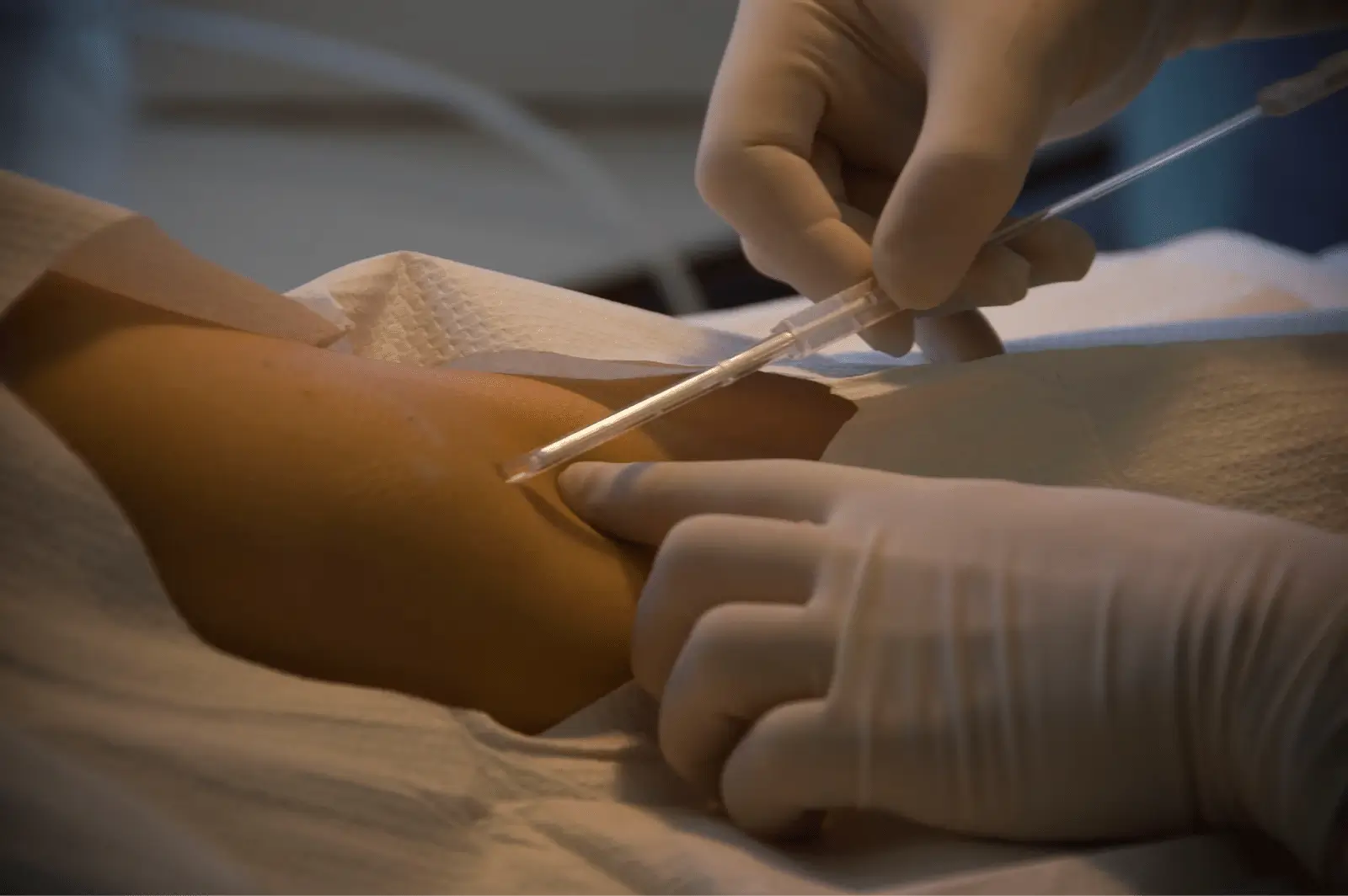Only for Licensed Professionals
Only for Licensed Professionals
.webp)
Nexplanon Dosage and Schedule
Nina Petrovic
Last Updated On: September 23, 2025
Staying on schedule matters when it comes to birth control. Whether it’s remembering a daily pill or keeping track of a long-term method, timing plays a significant role in making sure contraception works the way it should. For long-acting options, both the device and the schedule of use are key to maintaining protection.
Nexplanon is a small, flexible implant that contains etonogestrel, a hormone that prevents pregnancy. Once placed under the skin of the upper arm, it provides reliable contraception for up to three years. To keep that protection strong, it must be inserted and replaced at the right time.
In this article, we’ll break down Nexplanon’s dosage and schedule—how the implant works, when it should be placed or replaced, and what patients and providers need to know to ensure safe, uninterrupted protection.
Key Takeaways
- The standard Nexplanon dosage is a single implant containing 68 mg of etonogestrel, placed under the skin of the upper arm.
- Once inserted, Nexplanon provides up to three years of continuous pregnancy prevention; timely replacement is required to maintain protection.
- Insertion timing matters: immediate protection occurs if placed within the first five days of the menstrual cycle; otherwise, backup contraception is needed for seven days.
- Effectiveness can be influenced by drug interactions (CYP3A4 inducers like rifampin or certain anticonvulsants) and insertion technique, but most women achieve the full three-year duration.
- Bleeding changes are common during use and do not indicate reduced effectiveness—the expiration date is the most reliable guide for replacement.
About: Operating since 2016, Med Supply Solutions is known for being one of the industry’s top and trusted suppliers of cosmetic and viscosupplementation products. If you’re looking to buy Nexplanon online, contact our sales department for more information.

Understanding the Standard Dose of Nexplanon

The standard Nexplanon dosage is a single, preloaded implant that contains 68 milligrams of etonogestrel, a progestin hormone. The implant is placed just under the skin of the non-dominant upper arm. Once inserted, it steadily releases small amounts of hormone into the bloodstream. This dose works by suppressing ovulation, thickening cervical mucus, and potentially altering the endometrium to make it less receptive, creating multiple layers of protection against pregnancy.
Because the implant comes pre-measured, patients do not need to worry about daily or monthly adjustments. Unlike oral contraceptives that require strict adherence, Nexplanon provides continuous and reliable hormone delivery from a single procedure. For providers, following the Nexplanon dosage guide standardizes practice and supports consistent outcomes. This simplicity is one of Nexplanon’s strongest advantages over shorter-term contraceptive methods.
How the Nexplanon Schedule Works Over Time
The Nexplanon schedule follows a fixed timeline. Once in place, the implant provides pregnancy prevention for up to three years. Hormone levels slowly decline over time, but protection remains highly reliable through the approved duration. After three years, removal or replacement is needed to maintain full effectiveness.
The timing of insertion also matters. If placed within the first five days of the menstrual cycle, Nexplanon begins working immediately. If inserted at another time, patients should use backup contraception for seven days. Clear counseling about timing helps prevent gaps in protection. For clinicians, resources such as official training guides on how to insert Nexplanon ensure proper placement and reinforce adherence to replacement schedules.
Factors That Influence the Duration of Nexplanon Effectiveness

Nexplanon is labeled to last for three years, though some research suggests it may remain effective longer. While most patients achieve the full duration of protection, certain factors can affect performance. Understanding these considerations helps providers offer tailored counseling and patients make informed decisions.
Key considerations
- Body Weight and BMI: Women with higher body weight may have lower circulating hormone levels toward the end of use. However, available evidence shows Nexplanon remains highly effective across weight ranges. Providers may choose closer follow-up if additional risk factors are present, but routine early replacement is not generally required.
- Drug Interactions: Medications that induce the hepatic CYP3A4 enzyme, such as rifampin, rifabutin, and certain anticonvulsants, can lower etonogestrel levels and reduce effectiveness. Patients should always tell their provider about all current medications. Routine antibiotics do not interfere with Nexplanon’s action.
- Insertion Technique: Correct subdermal placement ensures consistent hormone release and reduces complications. Improperly deep placement may limit effectiveness and make removal more difficult.
By addressing these factors openly, providers can personalize contraceptive guidance. For most women, when inserted properly and monitored appropriately, Nexplanon provides the full three-year duration of highly effective pregnancy prevention.
Counseling Patients on Dosage and Replacement Timing of Nexplanon
Counseling bridges the gap between clinical practice and patient confidence. Providers should explain that Nexplanon contains a fixed dose of hormone and works on a predictable three-year schedule. Reinforcing the need for timely replacement helps prevent contraceptive gaps and supports peace of mind.
Counseling Points
- Replacement timeline: Nexplanon should be removed or replaced on or before the three-year mark. Delays may compromise effectiveness.
- Bleeding changes: Irregular, lighter, or absent periods are common with progestin implants and do not mean the implant is losing protection.
- When to return: Patients should seek care if they cannot feel the implant, if there is persistent pain, or if pregnancy is suspected.
- Expiration awareness: The most reliable way to track effectiveness is by monitoring the replacement date. Discussions about signs that Nexplanon is wearing off should focus on expiration timing, not bleeding changes, since cycle irregularities can occur at any time without reducing contraceptive protection.
By combining clear explanations with practical scheduling advice, providers empower patients to take control of their reproductive health and ensure continuous protection.
Conclusion
The Nexplanon dosage and schedule offer a straightforward, low-maintenance approach to birth control. A single implant provides up to three years of reliable hormone delivery, freeing patients from daily or monthly dosing. For providers, understanding both the dosage and timing is essential to ensure safe placement and continuous protection. For patients, clear counseling and timely replacement reinforce confidence and support uninterrupted contraception.
FAQs
1. What is the standard Nexplanon dosage?
The standard dose is a single implant containing 68 milligrams of etonogestrel. This provides up to three years of pregnancy prevention without the need for daily or monthly maintenance.
2. How long does Nexplanon last before replacement is needed?
Nexplanon is effective for up to three years. To maintain continuous protection, it should be replaced on or before its expiration date.
3. Does body weight affect Nexplanon’s contraceptive duration?
Studies show Nexplanon is effective across weight groups. While hormone levels may be slightly lower in women with higher BMI near the end of use, real-world effectiveness remains high. Providers may consider additional monitoring if other risk factors are present.
4. Can Nexplanon insertion be delayed after removal?
Yes, but delaying re-insertion leaves a gap in protection. To avoid unintended pregnancy, replacement is recommended immediately after removal.
References
Pullam T, Russell CL, White-Lewis S. Frequency of medication administration timing error in hospitals: a systematic review. PSNet. Published March 15, 2023. https://psnet.ahrq.gov/issue/frequency-medication-administration-timing-error-hospitals-systematic-review
Palomba S, Falbo A, Di Cello A, Materazzo C, Zullo F. Nexplanon: the new implant for long-term contraception. A comprehensive descriptive review. Gynecological Endocrinology. 2012;28(9):710-721. doi:10.3109/09513590.2011.652247
Guida M, Farris M, Aquino CI, Rosato E, Cipullo LMA, Bastianelli C. Nexplanon Subdermal Implant: Assessment of sexual profile, metabolism, and bleeding in a cohort of Italian women. BioMed Research International. 2019;2019:1-6. doi:10.1155/2019/3726957
Products
Cart
Log In
Newsletter
Subscribe for exclusive offers and updates on new arrivals
Share feedback at:
Working Hours
MON - SUN 9AM to 6PM EST
The Most Popular Brands
Med Supply Solutions
Support
Secure checkout is guaranteed with full adherence to PCI DSS payment standards.
Products listed here are guaranteed authentic and manufacturer-sourced.
Pay easily with trusted providers


*Google and Apple Pay are currently only available via a direct link provided by your account manager.
Copyright 2025. Med Supply Solutions